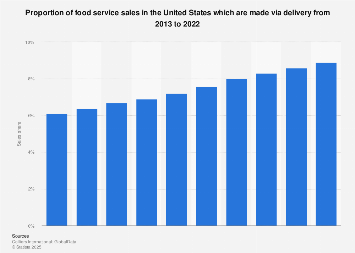FDA Looks at Safety of New Food Delivery Services

As the COVID-19 pandemic closed in last year, Americans increasingly turned to food delivery and other ways to avoid shopping in person at crowded supermarkets.
While these delivery options may have helped curb the spread of the coronavirus, there’s reason to doubt they did anything to improve food safety. With more people handling food items and perishables being transported in cars, delivery vans and on bikes, there are plenty of new opportunities for contamination and spoilage.
The U.S. Food and Drug Administration (FDA) wants to get a handle on the situation and has scheduled a three-day virtual meeting in October to hear from vendors, public health experts and consumers.
“The COVID-19 pandemic has accelerated the need for the FDA to help ensure that foods ordered online and delivered directly to consumers are safe to eat and not at risk of contamination,” said Frank Yiannas, FDA’s Deputy Commissioner for Food Policy and Response.
Companies expected to participate include Hello Fresh, Factor, Home Chef, Blue Apron, Sun Basket, Every Plate, Fresh Easy, Freshly, and Diet-to-go. They all operate online businesses that take orders from customers and delivery meals and “meal kits” to consumers’ homes.
The meals are typically packed in cardboard boxes surrounded by insulation and dry ice or cold packs. In many cases, the packaging dwarfs the actual food and consumers are left with a lot of packaging material to dispose of.

Time in transit affects food safety
But it’s not the disposable burden the FDA is concerned with – it’s the safety aspects of packaging food that may spend two or more days in transit, exposed to weather delays and other hazards of modern transportation. Most meal kits consist of uncooked meat or fish and produce, including produce intended to be eaten raw.
Even if it arrives safely at its destination, the food may be left unattended on the consumer’s doorstep for hours at time. In hot weather, that increases the risk that the insulation and cold packs won’t be enough to maintain safe temperatures.
A Northern Virginia consumer recently complained that his Sun Basket package was often left sitting in the blazing sun on his hot driveway when shady spaces were just a few feet away.
“You don’t have to be too smart to realize that direct sunlight and refrigerated perishables don’t go together,” the consumer, who asked that his name not be used, said. “Somone needs to educate these drivers.”
Similarly, a Palm Springs, California, consumer reported that his package of 12 frozen salmon steaks from Alaska arrived soggy and defrosted when it showed up two days behind schedule, having apparently spent the time sitting on a hot FedEx truck during a period when daily highs exceeded 100 degrees.

Not just meal kits
While the FDA’s focus is primarily on meal kits, all types of food delivery services, including restaurant delivery and grocery delivery have seen a big increase during the pandemic.
According to an April 2020 survey conducted by Statista, more than one-third of both suburban and urban respondents said they used online food delivery services or restaurant apps to order food.
According to the 2021 Food and Health Survey conducted by the International Food Information Council, 72% of Americans say the pandemic is changing the way they eat and prepare food. This study showed 42% of consumers are shopping for groceries online at least monthly.
“The food industry needs resources to help communicate with consumers amid this changing landscape,” said Steven Mandernach of the Association of Food and Drug Officials (AFDO), in a news release. “We’re in a new era of food safety, and it requires that everyone understand their role in maintaining the safety of our food from the farm to our tables.”
Last-mile food delivery
The FDA had previously indicated it would be studying the so-called “last-mile” issue, a task made more pressing by the increasing reliance on home delivery, which shows signs of surviving the pandemic as consumers have come to value its convenience.
The change was occurring more slowly, but “during the pandemic, the number of Americans ordering food for delivery has skyrocketed,” Yiannis said in a news release.
The FDA plans to use what it learns during the public meeting and comments submitted to the Federal Register to help determine what actions, if any, could be needed to keep consumers safe.
Consumers who want to comment can do so using a form on the FDA website.
